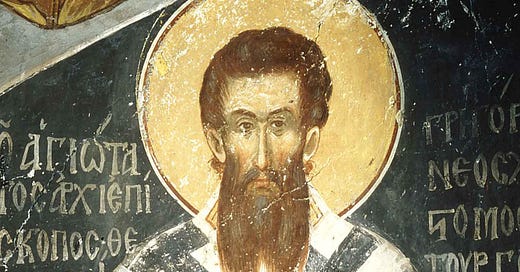Bulgakov’s Bold History of Patristic Thought
Reading Notes on Bulgakov’s The Bride of the Lamb: Chapter 1. The Creation of the World “Out of Nothing”: Section 3. The Sophianicity of the World: Sub-Section c. Patristics
In this section of The Bride of the Lamb, Sergei Bulgakov gives a brief overview of the entire history of Christian theology during the patristic period from its birth with Origen up through Saint John of Damascus. He even gives a connection to Saint Gregory Palamas at the end. Bulgakov clearly thinks that Christian theology is supposed to be lively and productive when it is healthy and thriving, and he considers it to have been this way for almost the first millennium of Christian history. However, he says that there was substantial stagnation after that. With an astonishing boldness, Bulgakov assumes that his own work is a critical part of deepening and refreshing the entire course of Christian theology. It is enough to make me understand why he was such a controversial figure, but his deathbed transfiguration as well as the beauty and profundity of his theological vision make me think that he was simply speaking the truth. Please subscribe for my notes on this section in Bulgakov’s The Bride of the Lamb. (See here for a full schedule of these bi-weekly reading notes.)
Keep reading with a 7-day free trial
Subscribe to Copious Flowers to keep reading this post and get 7 days of free access to the full post archives.




